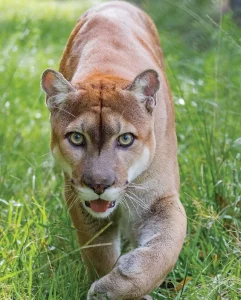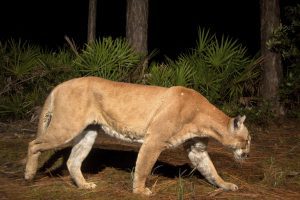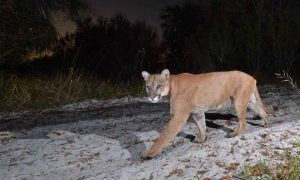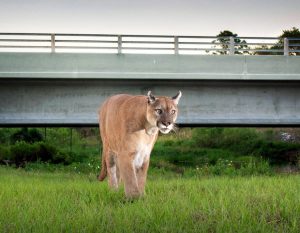The Florida panther, a majestic and iconic species that wildlife enthusiasts and conservationists have long admired, faces the imminent threat of extinction, leaving a mere 100-180 individuals in the wild. In this article, we will explore why Florida panther conservation is crucial. We will highlight its unique ecology, the challenges it encounters, and the ongoing efforts to ensure its survival.
The Unique Ecology of the Florida Panther

The Florida panther, scientifically known as Puma concolor coryi, represents a subspecies of the North American cougar, exclusively found in southern Florida. While historically distributed throughout the southeastern United States, the species has experienced a significant reduction in range due to factors like habitat loss, hunting, and other human activities. This top predator plays a vital role in maintaining ecological balance, particularly in regulating populations of white-tailed deer, its primary food source.
Habitat Loss and Fragmentation: A Threat to the Florida Panther

Habitat loss stands as one of the primary reasons behind the Florida panther’s endangered status. The rapid growth of Florida’s human population in recent decades has led to the conversion of vast tracts of the panther’s native habitat into urban and agricultural areas. Consequently, the panther’s range has become fragmented, making it increasingly challenging for individuals to find mates and maintain genetic diversity. Inbreeding has become prevalent, resulting in various health issues and decreased fitness. To learn more about habitat loss in Florida, read our previous blog https://ideasforus.org/florida-deforestation-crisis/
Additional Threats

Apart from habitat loss, the Florida panther faces additional threats, including vehicle collisions, diseases, and hunting. Vehicle collisions are particularly concerning, accounting for the majority of recorded panther deaths. As southern Florida witnesses the construction of more roads, the risk of these collisions escalates, further endangering the species. Disease poses a significant threat as well, as panthers can contract ailments like feline leukemia and feline immunodeficiency virus from domestic cats. Lastly, despite the illegality of hunting Florida panthers, poaching for their pelts or other body parts remains a persistent issue.
Conservation Efforts: Protecting the Florida Panther’s Habitat

Despite the numerous threats looming over the Florida panther, hope remains for the species. Over the past few decades, various conservation efforts have been implemented to protect the panther and its habitat. In 1981, the state of Florida established the Florida Panther National Wildlife Refuge, covering over 26,000 acres in southern Florida. This refuge serves as a dedicated space for the panther’s protection, providing ample room for roaming and breeding. Additionally, it offers educational and recreational opportunities to raise awareness about the importance of panther conservation.
An initiative that is boosting Florida panther conservation efforts is the Florida Wildlife Corridor. This network covers approximately 18 million acres of land, including public and private lands, conservation areas, state and national parks, and wildlife refuges. The Florida Wildlife Corridor aims to create an unbroken ecological pathway for wildlife, facilitating the movement of animals across the state and preserving their habitats. The corridor is vital in conserving and reconstructing the Florida panther’s habitat. For more information on Florida panther conservation efforts including the Florida Wildlife Corridor, check out our previous blog https://ideasforus.org/the-florida-wildlife-corridor/ .
Mitigating Vehicle Collisions

Furthermore, conservation initiatives have focused on mitigating the risk of vehicle collisions. Some roads in southern Florida have been widened to include specialized wildlife crossings, enabling panthers and other animals to safely traverse without being struck by vehicles. This endeavor holds significant importance since vehicle collisions pose one of the greatest threats to the Florida panther today.
Minimizing Human-Animal Conflicts
Other conservation efforts concentrate on minimizing conflicts between humans and panthers. For instance, researchers have explored the use of guard dogs to safeguard livestock from panther predation, thereby reducing the necessity for lethal control measures. These endeavors not only protect the panther but also benefit local farmers and ranchers, fostering a mutually beneficial situation for both people and wildlife.
Perhaps one of the most promising conservation endeavors involves reintroducing the Florida panther to other areas within its historic range. In recent years, researchers have diligently worked to identify suitable habitats in other parts of the southeastern United States, aiming to establish new panther populations outside of southern Florida.








